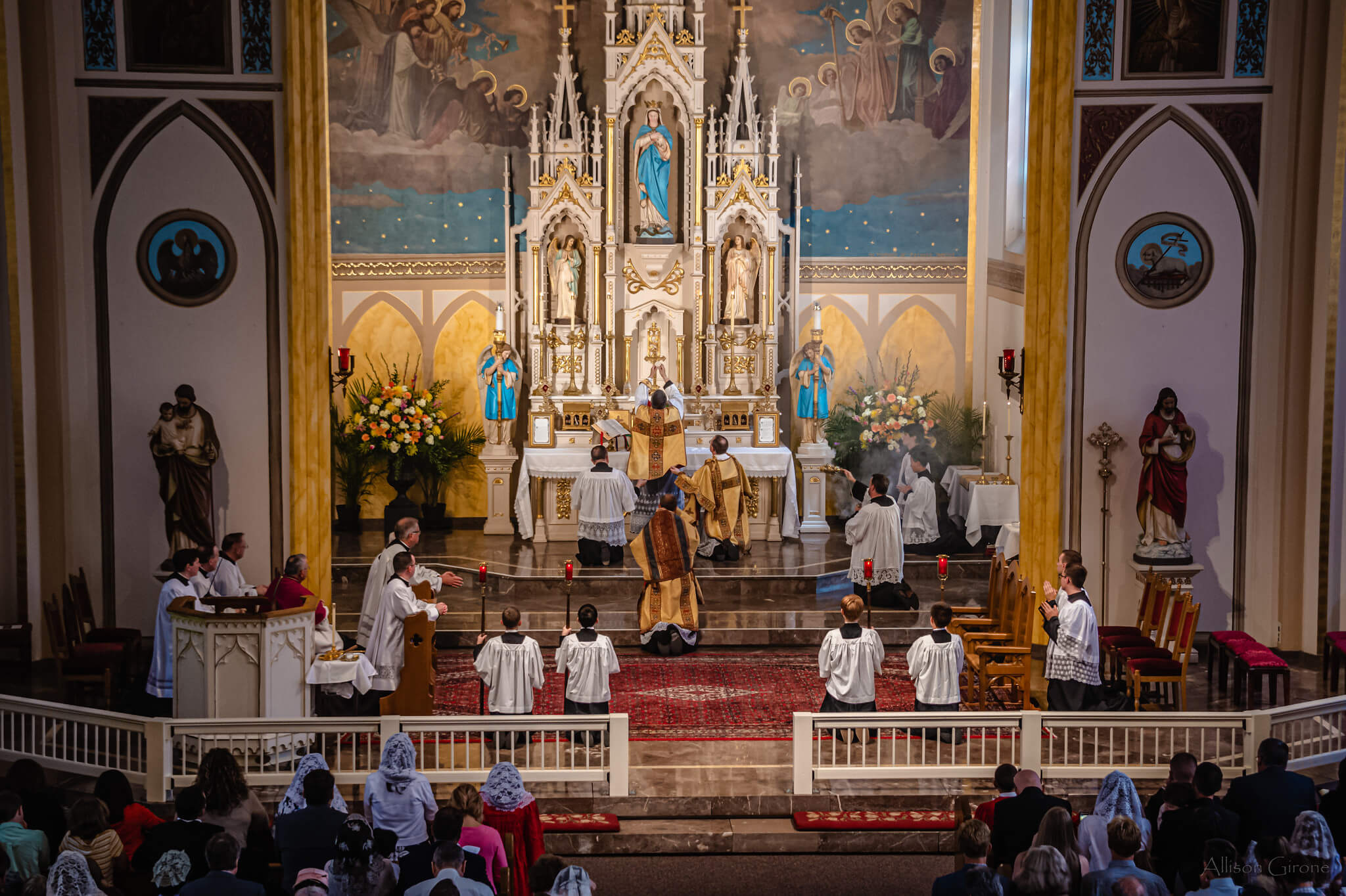In his open message to priests, dated January 2, 2022, Archbishop Carlo Maria Viganò begins with the admission that he had served the “Holy Apostolic Mass” as a youth; that it was the Mass of his ordination in March, 1968; and that it soon became a distant memory. He admits that he had been away from the “Old Mass” for almost fifty years.
Archbishop Viganò does not question the validity of the Novus Ordo Mass. Rather, he affirms the validity of both rites of the Mass: “The theologian will tell me that this is common doctrine, and that the Mass is exactly that, regardless of the rite. I do not deny it, rationally.” Significantly, he does not even hint that the Mass of his youth may have suffered any degradation. Rather, he urges his brother priests to learn to celebrate the Holy Sacrifice to which he has now returned.
I would venture to guess that many Catholics who usually attend a Traditional Latin Mass, on occasion attend a reverent Novus Ordo Mass — like the ones Archbishop Viganò must have offered — and come away feeling that they have unquestionably attended Mass. But now the pope has said that there is only one Roman rite of the Mass and the time has come to bring all Roman Catholics together in the same lex orandi.
The pope has not come right out and said that the Traditional Latin Mass is not a true Mass. But what else could it mean when the Traditional Latin Mass is not allowed to be offered in parish churches? What else could it mean when the Traditional Latin Mass is not allowed to be offered on Easter? What else could it mean when “the liturgical books of Saint Paul VI and Saint John Paul II” are proclaimed “the unique expression of the lex orandi of the Roman Rite”?
The stated purpose of the pope’s actions is to implement “the reform willed by the Vatican Council II.” The reasons for such reforms were set forth by the Council in paragraph 21 of Sacrosanctum Concilium:
In order that the Christian people may more certainly derive an abundance of graces from the sacred liturgy, holy Mother Church desires to undertake with great care a general restoration of the liturgy itself. For the liturgy is made up of immutable elements divinely instituted, and of elements subject to change. These not only may but ought to be changed with the passage of time if they have suffered from the intrusion of anything out of harmony with the inner nature of the liturgy or have become unsuited to it.
In this restoration, both texts and rites should be drawn up so that they express more clearly the holy things which they signify; the Christian people, so far as possible, should be enabled to understand them with ease and to take part in them fully, actively, and as befits a community.
But wait. Sacrosanctum Concilium says “if,” not “because.” “If” the rite has suffered from the intrusion of anything out of harmony with the inner nature of the liturgy or has become unsuitable to the liturgy, it “not only may but ought to be” reformed. Where then is the determination of fact regarding such liturgical disharmony or unsuitability?
Sacrosanctum Concilium sets forth the conditions that must exist for the “general restoration” of the presumably corrupted liturgy. The critical question, then, is whether holy Mother Church actually determined at the Second Vatican Council or at any time thereafter, that the Tridentine Mass had fallen out of harmony with the inner nature of the liturgy or become unsuited to it. In such an important and pivotal matter as suppression of the Tridentine Mass, shouldn’t holy Mother Church follow the Council?
If there has been such a determination, may we please see the record of it? May we please know when it took place and who participated in it? May we please see the evidence that was brought forward? May we please learn the standard for identifying when a rite has become unsuited to the inner life of the liturgy? May we please know the outcome of any vote that took place?
The faithful are owed this information if we are to accept that holy Mother Church has consciously willed the specific reform that is being implemented, as is now being asserted.
We have arrived at the climactic moment of the present papacy and it hinges on whether holy Mother Church has followed the Council that this pope was elected to implement. As a question of fact, did the Church determine that the Tridentine Mass had, over time, fallen out of harmony with or become unsuited to the liturgy of the Church? Or did she skip a necessary step?
Before they implement Traditionis Custodes, the bishops of the world should demand that the pope show compliance with the conditions laid down by the Council for “the reform of the sacred liturgy.” Unless the pope backs up his contention that his reform was willed by the Council, the bishops of the world need have no concern that the Tridentine Mass is no longer suited to the liturgy of the Church.


